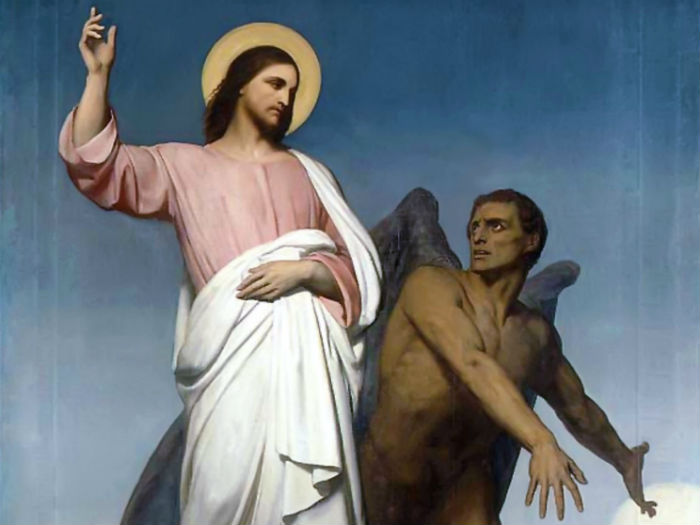
This post is part of the General Conference Odyssey.
It is not often that you hear someone share a testimony of the existence of Satan, but that’s exactly what was so striking about Elder David B. Haight’s talk on the Power of Evil. Towards the end he said plainly, “I bear witness this day that the devil is real. I have felt of his influence.”
Which raises the question: why? Why is it important to know this? Mormonism is, generally speaking, a relentlessly optimistic faith. We have very strict rules, but we don’t generally hear a lot about brimstone. The motivation is generally love rather than fear. And so it’s possible to ask—if we already have such strict standards and an emphasis on hope—does it really matter if we talk about the devil?
Well, in one sense, not that much. After all, this is the first talk that has focused on that topic that I’ve ever read. Clearly it’s not our primary emphasis and it won’t ever be.
But on the other hand, the topic was worth bringing up, and Elder Haight’s talk explains why:
Unfortunately, along with much of the world, some of our loved ones are influenced by false prophets, false Christs, and modern movements of spiritualism. Some have become victims of satanic influences because they do not understand or realize the power of the adversary who knows human weaknesses and is ever present.
The reason some are led astray is especially that “the current wave of permissiveness in many areas of our lives is being encouraged by false interpretations of our true, basic, moral principles.” I wasn’t alive in the 1970s, but I’d hazard a guess—based on what I know of the time period and what I’ve read from these talks—that the notion of agency and individual freedom was one thing that led people astray. The same kinds of mistakes are happening today.
But we have to resist the temptation to take a talk like this and morph it into something along the lines of “my political adversaries are devils; my political allies are angels.” If there’s one thing I’ve observed, from following the interplay of politics and morality, it’s the that devil knows how to play both sides of the spectrum. When anti-federalist militia members took over a federal building in eastern Oregon earlier this year, they included flags quoting the Title of Liberty and even one individual who identified himself as Captain Moroni. It’s hard to think of a clearer example of “false interpretations” of Mormonism.[ref]I picked this example because Mormons are famously politically conservative, so I wanted to show that they can be led astray in that direction as well.[/ref]
What it comes down to for me is that we should apply prophetic teachings to ourselves rather than to others. Nephi said that he “did liken all scriptures unto us,”[ref]1 Nephi 19:6, emphasis added[/ref] not that he related scriptures to their enemies. The same principle applies here. Elder Haight’s talk is a warning to examine our own convictions, our own beliefs, and our own actions. A reminder that the devil can lead even the righteous astray is an opportunity for humility and self-reflection. We must be discerning, and tribalism–political or otherwise–is blinding.
There’s a saying that the greatest trick the devil ever pulled was convincing the world he didn’t exist. Perhaps the second-greatest trick is letting the world believe that he does exist, but convincing them that he’s always on the side of their enemies.
—
Check out the other posts from the General Conference Odyssey this week and join our Facebook group to follow along!
- God of the Gaps: Do not Cast Yourself off the Temple by G
- The Joy of Sharing the Gospel by Daniel Ortner
- Over-Power-ing Evil by Jan Tolman
- Expanding Symmetry by Marilyn Nielson
What does the embrace of a “real” devil do for Mormonism that the Book of Mormon’s “natural man” concept can’t do just as well?